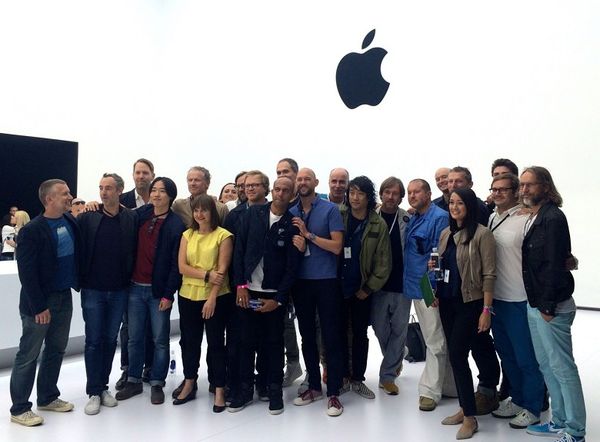On Roberto Verganti's Four-Step Process of Innovation Incubation
"The more ideas, the better" has been conventional wisdom in innovation theory and consulting, as well as in design thinking. In the January issue of Harvard Business Review, Professor Roberto Verganti from Politecnico di Milano, wrote a controversial commentary on the role of criticism in the early stages of innovation process.
Verganti argues that any development process aimed at great innovativeness should place focus more on developing ideas within a small circle of people. He proposes a four step process that should facilitate innovation through carefully applied criticism. It consists of the following steps:
- Individual reflection
- Sparring partners
- Radical circles
- Outsiders
Let me describe how I interpret these actions.
1. Individual reflection
Verganti's proposal for reflection is best understood through an example. Introducing a case study of Vox, a polish furniture company, he describes a creative process spanning several weeks among a team of 19 company members. During this time, the participants were encouraged to explore their own ideas and build them independently. Another important aspect was that the participant were encouraged to trust their own feelings and reflection as the source of feedback. Instead of relying on user or customer insights, people were to draw on their own experiences.
I fully endorse individual reflection. Much of the bad publicity for "Brainstorming" and other forms of ideation comes from poorly organized and facilitated group work. It's important to acknowledge that much idea generation work can and should be done individually. Lack of time is often an issue, too. Although scientific evidence for the influence of incubation is incoherent, it does agree on the usefulness of taking time and having breaks in between your creative work sprints.
2. Sparring partners
Constructive feedback develops ideas and the thinking behind them. The best way to get in the constructive mood is to get the feedback from trusted peers. Trust is extremely important to keep the recipient attuned to the feedback, to make them feel that the talk is about the idea and the criticism has not nothing to do with the person. This is not easy and requires trust in the feedback provider's good intents and professionalism. At this point, it should be clear
Giving and receiving crits in a professional setting means that criticism is distinct from skepticism. Criticism should be a tool to challenge assumptions and propositions about an idea so that ideas can be developed further. It should not be confused with skepticism, which is a prevailing negative attitude towards an idea. Verganti firmly believes that applied this way, criticism can become an engine of innovation.
criticism can become an engine of innovation
Verganti lists numerous times in the hi-tech industry in which two great minds have together been responsible for developing groundbreaking innovations - Microsoft, Apple, and Google are all good examples. A practical challenge may be finding the right person to work with. Here Verganti proposes "a pitching session meets speed dating" arrangement for introducing people and ideas so attendees with similar ideas should find one another.
3. Radical circles
Verganti calls a group 10-20 people involved in a shared creative effort a radical circle. He proposes that after the ideas have gone through individual and peer processing, they should be brought to an assembly of everyone involved for the next round of criticism. Here, criticism should be presented at a workshop that actively improves the presented ideas as well as seeks to connect and combine these to reach new levels of innovativeness.
Everyone who's ever participated in anything resembling what's proposed above will know the challenges of destroying and recombining ideas people have cherished and championed for some time. To find a common ground, Verganti proposes to seek mutual understanding for "no-go" zones, common enemies or directions nobody has found desirable. By working through these areas of avoidance that constrain the design space, group may eventually converge on some shared understanding on what their greatest ideas and most hopeful directions are.
Verganti gives one interesting example of such design-by-committee success story. The Alfa Romeo 4C Coupe was developed by a radical circle. This circle came up with two ideas that they successfully merged: Lonely Planet guide for driving and responsive vehicles for passionate drivers. The outcome was a success.
 Alfa Rome 4C Coupe, an outcome of work of a radical circle according to Roberto Verganti. Photo source: https://www.alfaromeousa.com/cars/alfa-romeo-4c-coupe
Alfa Rome 4C Coupe, an outcome of work of a radical circle according to Roberto Verganti. Photo source: https://www.alfaromeousa.com/cars/alfa-romeo-4c-coupe
4. Outsiders
The final stage in Verganti's process is external evaluation. These outsiders (also called interpreters by Verganti) should preferably be from domains distant to the product at hand, so they can feed in new kinds of ideas on how to best progress with the creative work. The logic is that distinguished professionals from other areas may see and perceive things invisible for the radical circle. As an example, Verganti describes the aforementioned Alfa Romeo case. The outsiders involved in that project included "a maker of leather goods, the CEO of a high-end resort, a manufacturer of fitness equipment, and a theater director."
Verganti resists to mention anything about users or consumers in this stage either even though this group might have something valuable to say as well as we all proponents of human-centered design believe.
My thoughts on Verganti's Four Step Process
Should we trust Verganti on this? During my scientific career, I've had many heated and sometimes fruitful discussions about validating design and innovation methods. I see that Verganti is clearly pointing out a valuable, often neglected aspect of the creative process - proper criticism. This is healthy, as long as it prevents us from not getting too dogmatic about the approaches we adopt in our design (design as in design thinking) work. In this case, suspending criticism for too long is not healthy. I believe you must be critical within the creative process, just be considerate with it! But I also fear Verganti's methodology is also falling a victim of its own design.
You can be critical within the creative process, just be considerate with it!
I'm personally skeptical about the self-referential design component, prominently present in the first step. I agree that it may lead to more outlandish ideas, it may be also be a great waste of time. Without exposing your ideas to other people, you may be captivated by your own specific circumstances and have difficulties seeing the forest from the trees. While you can expect professionals to provide a constructive comments in response to your ideas, presenting prospective users and customers will also give some real-world "criticism" which you just can't ignore. Verganti could name this fifth step "5. Touch reality."
I can't attribute much of the success of his cited cases to the proposed methodology. Creative processes - design processes - are subjects to many factors. Case studies, even the best ones, are unfortunately totally unsuitable to proof any solution of the format "do this, don't do that" as they can only serve to falsify certain approaches.
But I will cite one additional supporting "case." Apple's industrial design team is in size and behavior very much alike the radical circle discussed by Verganti. They are approximately 20 people who tediously and continuously crunch through ideas together. Everyone criticizes and brings into play their best understanding of people, technology and business (read more on their habits from CultOfMac article).The results are provoking and give credence to one particular feature of Verganti's method.
 Apple's famous Industrial Design team, a radical circle of about twenty people or so. Photo source Cult of Mac http://www.cultofmac.com/295069/heres-first-group-picture-apples-new-industrial-design-team/
Apple's famous Industrial Design team, a radical circle of about twenty people or so. Photo source Cult of Mac http://www.cultofmac.com/295069/heres-first-group-picture-apples-new-industrial-design-team/
Text byLassi A. Liikkanen @lassial
- Lassi A. LiikkanenDigital Analyst Lead




